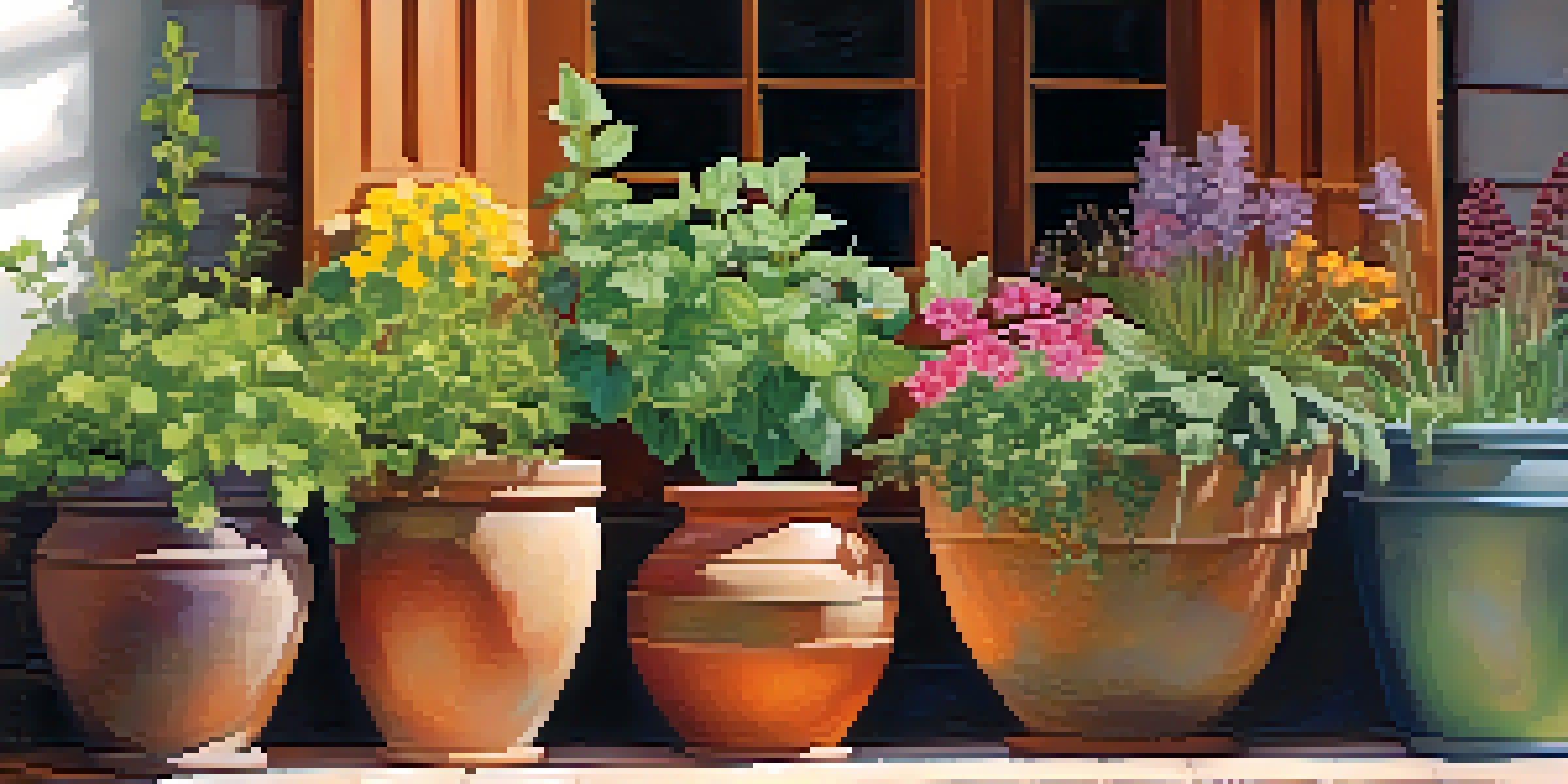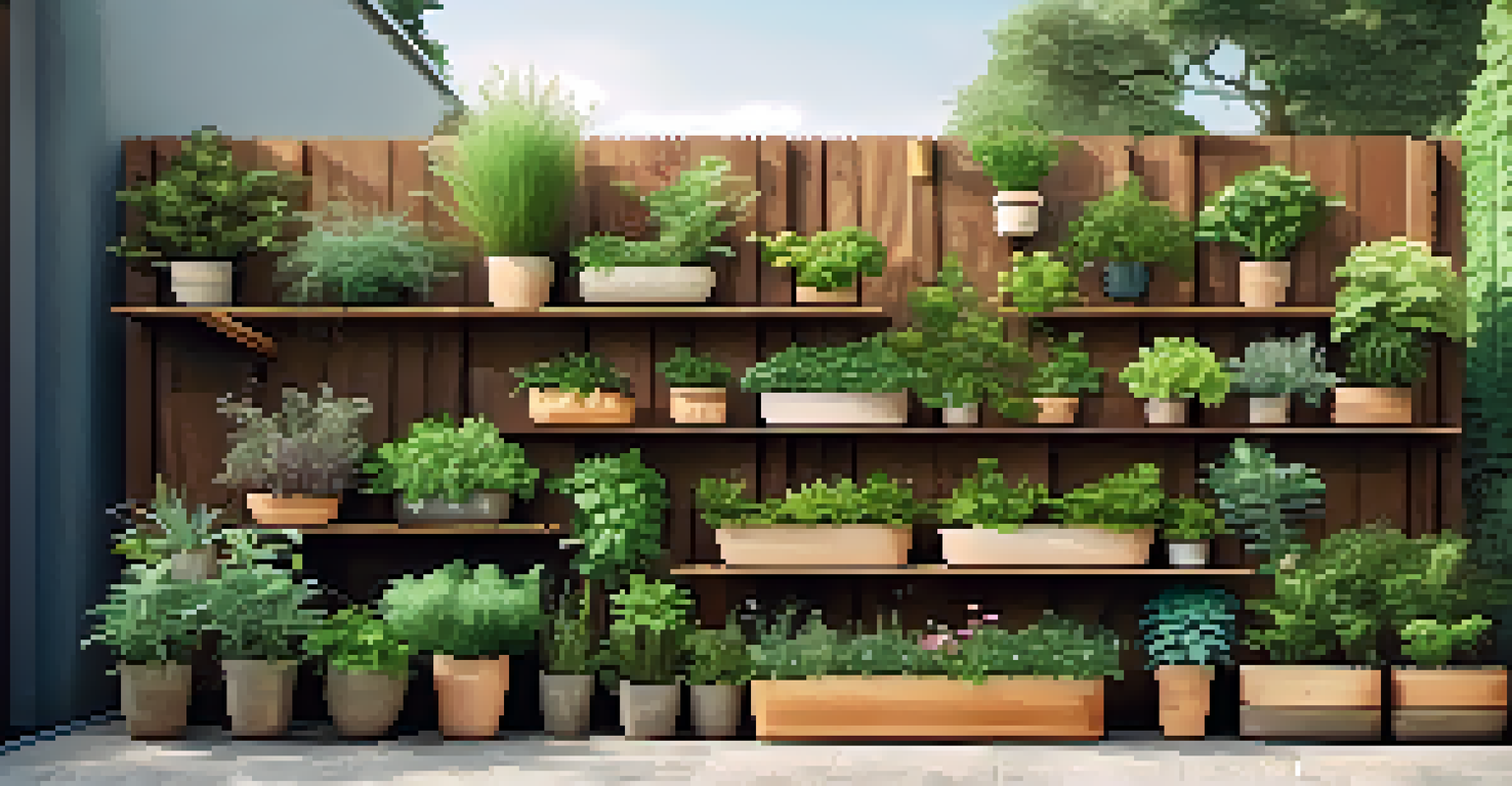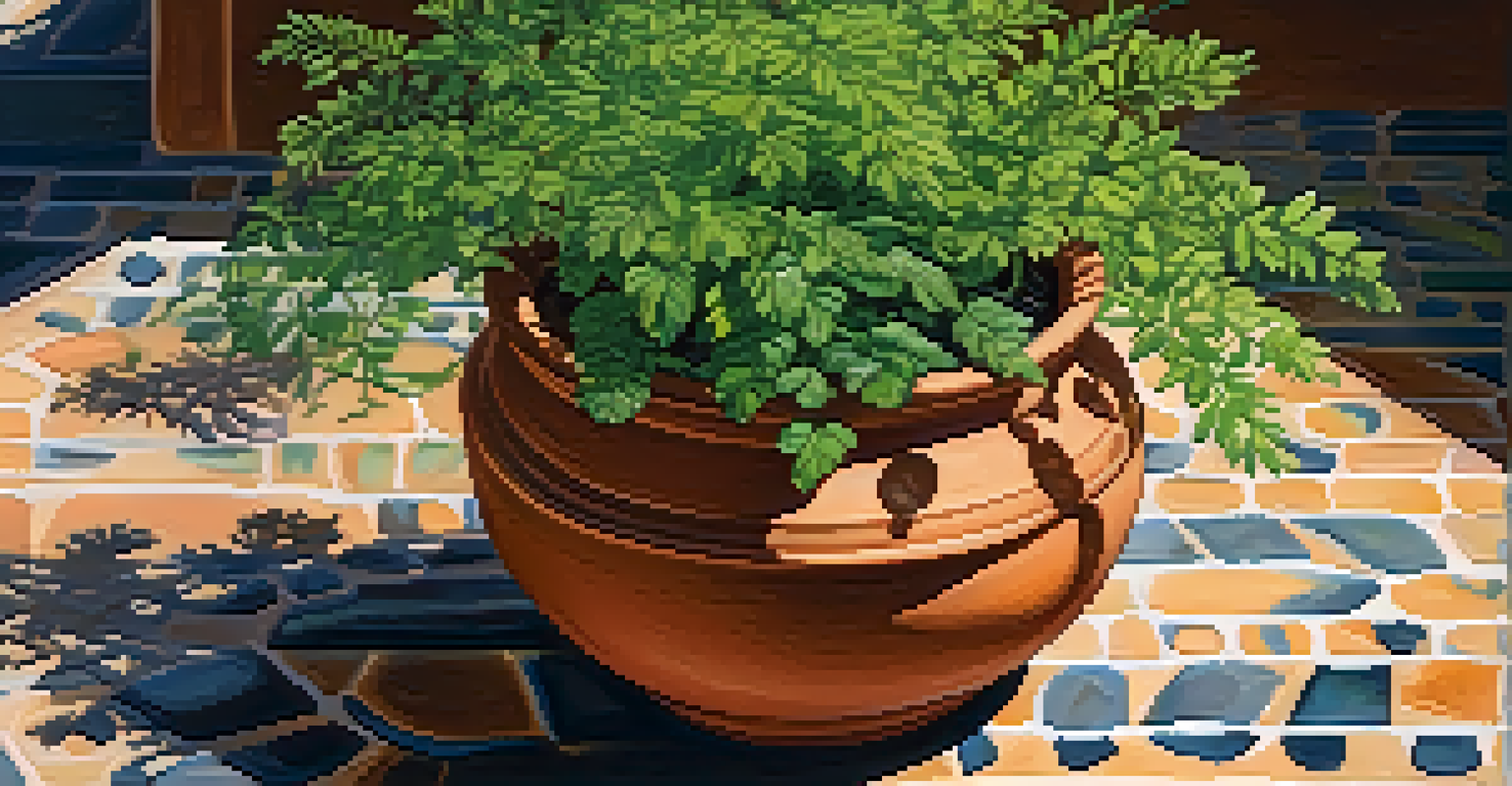Choosing the Right Containers for Your Small Garden

Understanding Your Garden Space and Needs
Before diving into the world of containers, it’s essential to assess your garden space. Consider factors such as sunlight, wind exposure, and available space. Small gardens can be tricky, so knowing what your plants need will help you make informed choices.
Gardening adds years to your life and life to your years.
Think about what types of plants you want to grow. Are you leaning towards herbs, flowers, or vegetables? Each type of plant may have different space requirements, which will influence your container selection. For instance, a large tomato plant will need a bigger pot than a petite herb.
Lastly, consider your gardening style. Do you prefer a low-maintenance setup, or are you ready for more hands-on care? Your preferences will guide you to the right containers that fit both your garden space and your lifestyle.
Choosing the Right Material for Containers
Container material plays a significant role in plant health. Common options include plastic, terracotta, metal, and wood, each offering unique benefits. For example, plastic containers are lightweight and retain moisture well, making them great for beginners.

Terracotta pots are a classic choice that provides excellent breathability, but they can dry out quickly. If you live in a hot climate, you might need to water your plants more often. On the other hand, metal containers can heat up quickly, which might not be ideal for all plants.
Assess Your Garden Needs First
Understanding your garden space, plant preferences, and maintenance style is essential before choosing containers.
Wooden containers add a rustic charm to your garden, but ensure they’re treated to resist rot. Ultimately, the right material should balance aesthetics, functionality, and your plant's specific needs.
Sizing Containers for Your Plants Properly
When it comes to container gardening, size truly matters. A pot that is too small can restrict root growth, while one that is too large may hold excess moisture, leading to root rot. As a general rule, opt for containers that provide enough space for your plants to thrive.
The love of gardening is a seed once sown that never dies.
For small plants like herbs, a pot of about 6 to 8 inches in diameter usually works well. Larger plants, such as peppers or tomatoes, will require pots that are at least 12 inches wide and deep. This will ensure they have enough room to grow healthy roots.
Keep in mind that you can always start small and repot your plants into larger containers as they grow. This gradual approach can also be a great way to manage your small garden space effectively.
Drainage: The Key to Healthy Container Plants
Good drainage is crucial for container gardens. Without it, excess water can lead to root rot and inhibit plant growth. Always choose containers with drainage holes at the bottom to allow excess water to escape.
If you’re working with decorative pots without drainage, consider using a smaller pot inside that has holes. This way, you can still maintain the aesthetic appeal while ensuring your plants get the drainage they need.
Choose Containers Wisely
Selecting the right material and size for your containers is crucial to ensure plant health and growth.
Additionally, using a layer of gravel or stones at the bottom of the container can help improve drainage. This small step can make a big difference in the health of your plants!
Incorporating Color and Style into Your Container Choices
Your containers can be a reflection of your personal style, so don’t shy away from choosing ones that bring you joy. Brightly colored pots can add vibrancy to your garden, while neutral tones can create a calming atmosphere. Consider how the colors will complement your plants.
Mixing and matching different styles can create a dynamic look in your garden. For instance, pairing sleek modern containers with rustic wooden ones can add visual interest and charm. Just ensure that the overall design remains cohesive.
Remember, containers are not just functional; they’re a key part of your garden’s aesthetic. Choose wisely to enhance the beauty of your small garden space.
Creating a Vertical Garden with Containers
In a small garden, vertical gardening is a fantastic solution to maximize space. Using stacked containers or wall-mounted planters can create an eye-catching display while saving ground space. This method allows you to grow a variety of plants even in limited areas.
Consider using trellises or shelves to arrange your containers vertically. This not only makes your garden more visually appealing but also allows for better air circulation around your plants. Plus, it can make maintenance tasks like watering and harvesting easier.
Maintain Your Container Garden
Regular watering, fertilizing, and pest management are vital for keeping your container garden thriving.
Vertical gardens can be particularly effective for herbs and leafy greens, which don’t require deep soil. With a little creativity, you can turn your small garden into a lush, vibrant space that stands out.
Maintenance Tips for Container Gardens
Maintaining a container garden is vital for the overall health of your plants. Regular watering is crucial, especially during hot weather, as containers can dry out quickly. Always check the soil moisture before watering to avoid over-saturation.
Fertilizing your plants is another key aspect of maintenance, as container soil can deplete nutrients faster than garden beds. Use a good quality liquid fertilizer every few weeks, or consider slow-release options for long-term feeding.

Lastly, keep an eye out for pests, as container plants can attract them just like traditional gardens. Regularly inspect your plants and take action promptly to keep your small garden thriving.